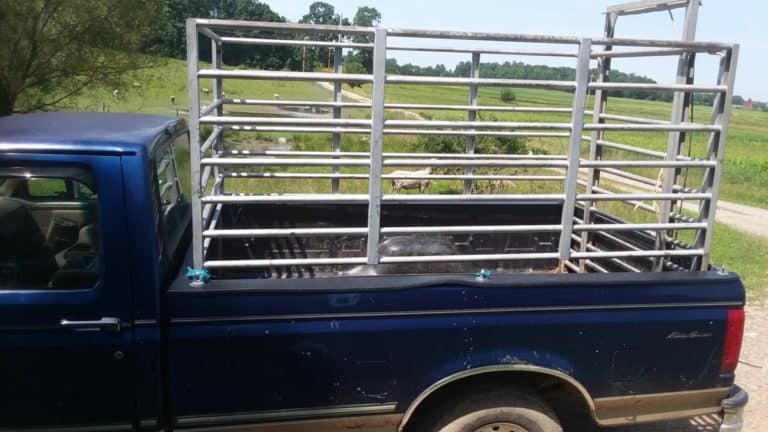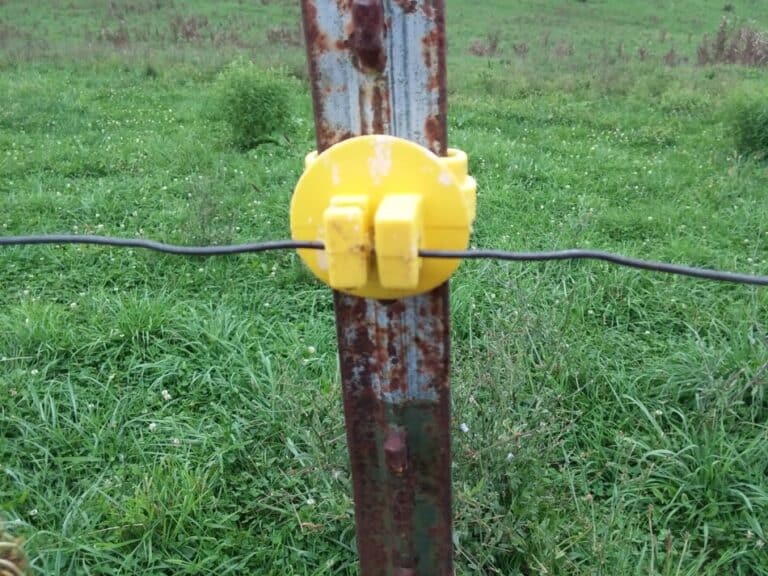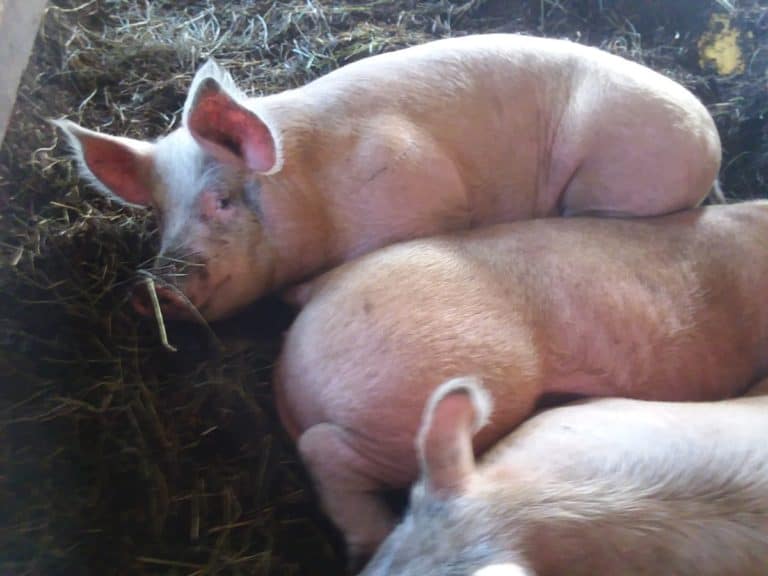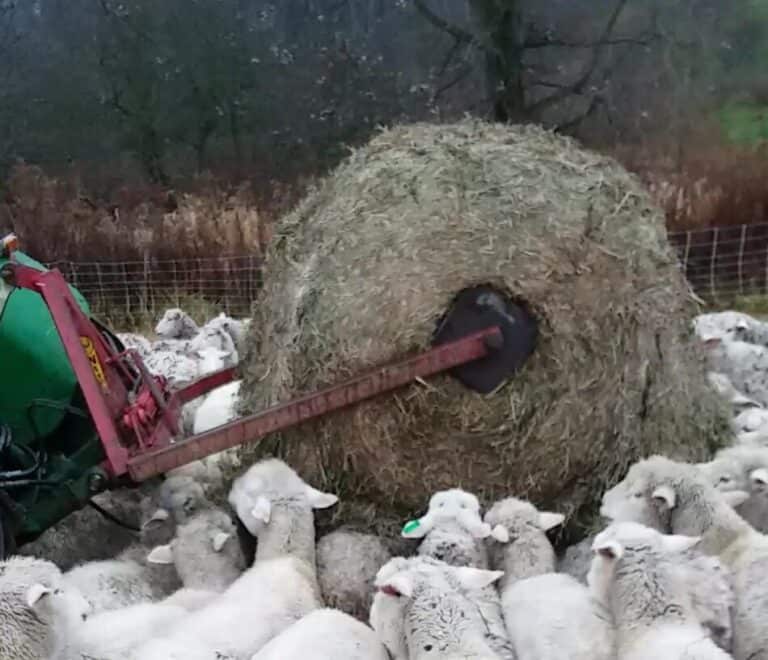7 Tips To Help You Choose High Quality Hay
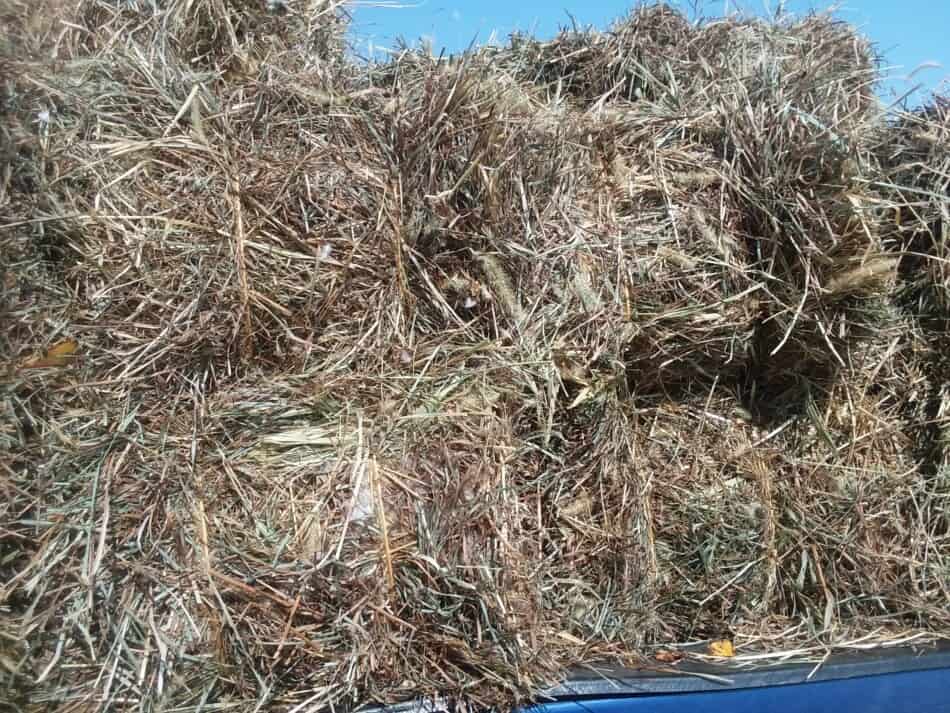
When you have livestock, one of your biggest expenses is going to be feeding them. For most animals that means buying hay and a lot of it!
How do you know what hay you should buy and what are the signs of high quality hay?
High quality hay is green in color, smells great and is mold free.
| Trait Of High Quality Hay | Why This Trait Matters To You |
| Green color | shows the hay was made early, dried quickly and has cured well |
| Great smell | fast way for you to determine quality and notice any mold |
| No seed heads | prominent seed heads means low quality hay |
| Hay has cured | newly baled hay needs a few weeks to cure before it is likely to store well |
| Stored inside | bales stored outside have a outer layer of ruined hay on each bale (disregard for dry regions) |
| Matches your needs | nutrition needs of your animals will change throughout the reproduction cycle |
How much hay should you plan to feed? Read How Many Bales Of Hay. It is written for sheep, however the way to figure hay needs is the same for any animal.
Good hay is green in color
High quality hay will be green in color, with the intensity of the green depending upon the plants in the hay.
For example, an alfalfa hay will have a very green coloration.
Alfalfa holds color well (as long as it is kept out of direct sunlight) as will a well made second cutting grass hay. Both will be a wonderful green when the hay is of high quality.
The flip side of checking the color of hay is that it also will help you to identify poorly made hay.
In hay of low quality, the color will not be green, it will be closer to brown.
The brown coloring is from baling older plant material to begin with or letting the hay get rained on before getting it dry and baled.
Either way, brown hay is of low quality and should not be purchased for your animals, unless you are planning to use it as bedding.
What Is 2nd Cutting Hay? shows you how to know that you are getting a higher quality hay for your money.
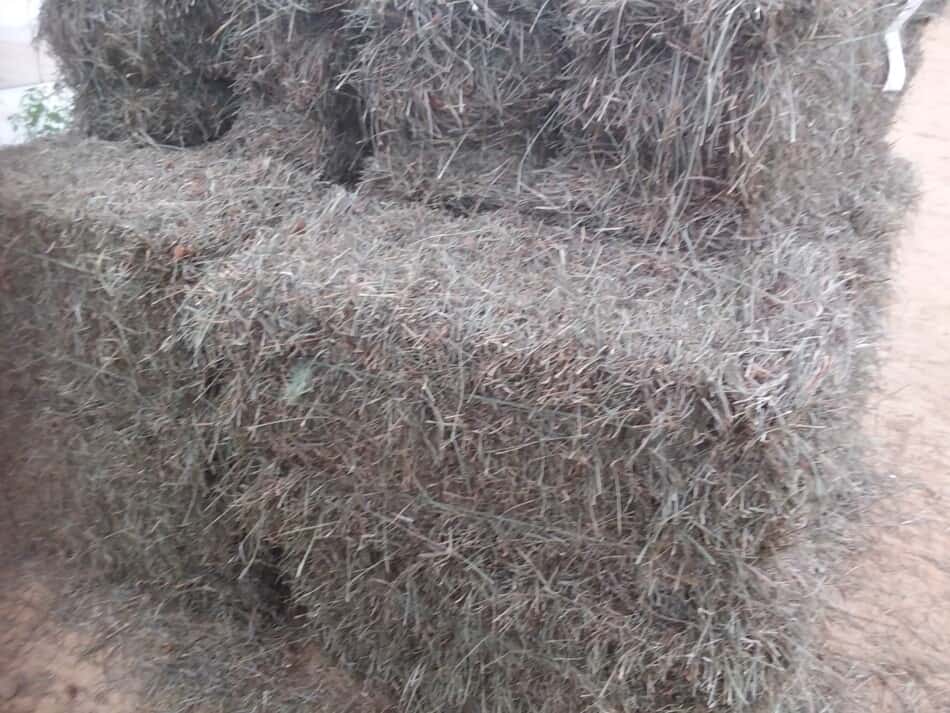
High quality hay will smell good
Hay your animals will like is hay that will smell good to you.
I love the smell of a nice hay, but hate the smell of junky hay. Take a whiff of the hay you plan to purchase and you’ll sort this out pretty quickly!
If you can’t smell the bale as it is stored, ask to break open a bale and see how the hay looks and smells on the inside.
Opening the bale really makes a difference for my ability to smell the hay. Right away a nice (or not so nice) smell will waft up from the bale.
If you get any smell other than a pleasant one, pass on this hay. It will be unpleasant from your animal’s perspective, as well.
Even if you feel awkward about smelling the hay, do it anyway. You’ll be able to immediately tell if the hay is worth buying or not.
Now that I think about it, I always smell the hay. This is such an easy way for me to double check quality. (First check is looks, second check is smell.)
Know the forages used for hay
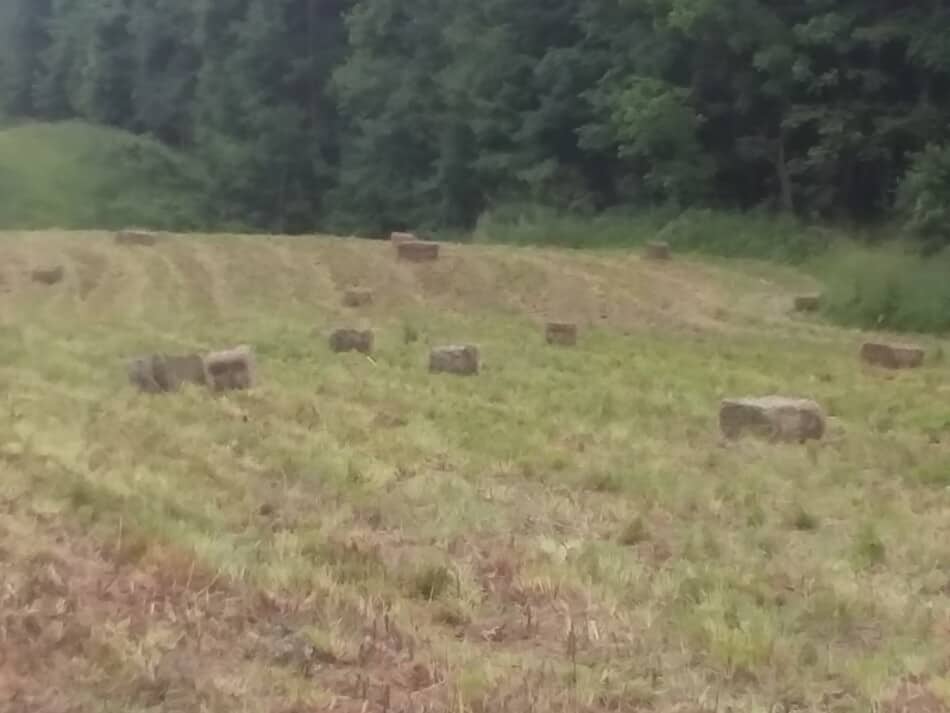
As mentioned above in the color section, you should be familiar with the forages used in making hay for your area.
Knowing the basic forages used in your area will help you to determine which seller to contact or which load of hay to bid on at the sale.
Wondering what to feed your sheep? Read my article Choosing Hay For Your Sheep.
Know what the different plants look like when they are harvested in a timely manner for hay and what they look like then the hay is overly mature or rained on.
Occasionally, a not so common opportunity, like a load of oat hay (very light in color, but animals love it) comes up in the local ads.
You’ll be able to take advantage of this opportunity, since you know what you are looking for and what high quality for that plant looks like.
Don’t get hung up on the oat hay part, it could be any less well know but good hay.
Oat hay was just a specific example of a hay in my area that most people miss out on because they don’t know about it, but is really quite good and animals like it.
Know the hay cuttings and uses
You should know what different cuttings of hay are available in your area and what animal that cutting is suitable for.
If you are in a dry part of the country the answer is easy, one cutting of hay for the year. When you buy hay locally, it’s all the same cutting.
For anyone with a higher amount of rain in the growing season, you’ll have multiple cuttings to choose from.
The basic cuttings are first, second, third, sometimes a fourth and rarely a fifth. So, why does this matter?
The later cuttings are finer stemmed and have more leaves, making these later cuttings nicer hay.
Generally speaking, first cutting hay is for a maintenance animal and the later cuttings are for an animal with higher nutritional needs like lactation or fast growth.
For a few real world examples of matching hay to the animal:
- A herd of beef cattle would winter just fine on a diet of nice first cutting hay
- Fast growing kids or lactating goats (dairy or meat breed) need an alfalfa hay
- Feeder lambs or ewes with lambs would need hay of higher nutrition, like a second cutting grass
Of course, there are many more combinations but this will give you the idea.
Hay needs change throughout the year
It’s critical to remember that the hay needs of your animals will change throughout the year.
Let me explain this idea using sheep as an example.
When your ewes are nursing lambs, they need quite a bit of energy. Any lactating ewe that’s in the barn will need good hay.
This is why you would be feeding them a second or third cutting hay, it has more of a nutritional punch.
However, when that same ewe is gestating (pregnant) but not nursing, her nutritional needs go down and she would do fine on a nice first cutting hay.
Timely harvest makes or breaks hay
The harvest timeliness and conditions have a huge influence on the resulting hay.
For the hay to be at the optimum nutrition that plant has to offer, the hay must be cut right before the plant starts to flower or send up a seed stalk.
This is the time when all of the nutrition is still in the plant.
Once the plant starts to flower, it will redirect energy to making seeds (that you don’t want) and away from the leaves that you do want.
When a plant switches from growing leaves to making seeds the hay quality plummets.
Overly mature growth that is cut for hay will yield poor quality hay. This hay was cut too late for the plant to have much nutrition left in it.
Cutting hay too late happens frequently in the late spring and early summer. By the time the fields are dry enough for the tractor, the hay is past it’s prime.
Hay that was cut at the optimum stage of plant growth, yet got rained on, for example, will be of low quality.
If the hay was cut on time but baled too wet, it will also be of poor quality.
Hay needs a few weeks to cure
Don’t feed newly made hay, if you can avoid it. Hay needs to cure for a few weeks before it is ready to be fed to your animals.
If it’s an emergency, where it’s new hay or no hay, feed the new stuff. Just keep an extra watchful eye on your stock to make sure they are handling it okay.
The other reason to let hay cure for a few weeks, versus buying it straight out of the field is that if the hay was baled too wet, it will heat and spoil.
If you wait until the hay has been through the curing time and then buy it, you’ll be past the potential heating stage and be better able to evaluate the feeding value of the hay.
Buy hay that has been stored inside
In some areas of the country, storing hay outside is a common practice. If it is really dry, this works great.
For areas with some summer rain, storing hay outside will ruin the outer round of hay.
| Size Of Round Bale | Depth Of Weathering | Ruined Hay |
| 4 foot diameter | 4 inches | 30% loss |
| 4 foot diameter | 6 inches | 40% loss |
| 5 foot diameter | 4 inches | 25% loss |
| 5 foot diameter | 6 inches | 35% loss |
| 6 foot diameter | 4 inches | 20% loss |
| 6 foot diameter | 6 inches | 30% loss |
Take a look at the table above, the average loss here is about 30%. Yikes! That means 1/3 of your money for the bale is buying junk hay.
If you are fine with peeling off the outer layer and only feeding the nice hay, that’s fine. Be sure to figure the wasted hay into the price.
If you do not want the wasted hay, then only buy hay that is stored inside. And, of course, store the hay you buy inside.
Here is a great article from Mississippi State Extension on hay losses, all kinds of great information here.
